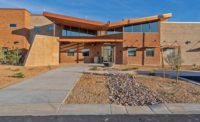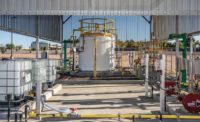Hillside Mine Lower Tailings Pile
Bagdad, Ariz.
Best Project
Owner/Developer/Project Manager: Arizona Dept. of Administration
Design Firm/General Contractor: AECOM
Civil Engineer: Hunter Contracting
Participating agencies: Arizona Dept. of Environmental Quality; Arizona State Land Dept.; U.S. Environmental Protection Agency
Sixty-plus years after operations ended on Hillside Mine near Bagdad, Ariz., tailings erosion was linked to high levels of contaminants in Boulder Creek. Contractor and designer AECOM was faced with numerous challenges in coming up with a solution, including difficult access to the mine creek and building a soil-cover system capable of withstanding a 100-year storm event. Other goals included preserving surrounding habitat and improving water quality.
Due to the presence of lead, arsenic, copper, zinc and other metals in the tailings, the field team members were required to complete 40-hour hazardous waste operations and emergency response training and eight-hour refresher courses.
The project team implemented dust-control measures and monitoring during tailings grading and cover placement activities in order to mitigate exposure to the metals present in the tailings.
During planning, cover and rip-rap materials were expected to come from offsite sources. However, limited access for loading and support as well as budget limits led the AECOM team to seek onsite materials to cover and protect tailings. The cover and long-term isolation barrier are both designed to ultimately blend into the environment. Workers constructed a rip-rap-line channel to carry away stormwater runoff from the reclaimed tailings.
The project required a maximum 5% slope on the cap’s surface, but the slope’s final grade averages 4%, reducing the water velocity and retention time for the evapotranspiration to function better, according to AECOM. The contractor added extra protection from potential erosion and exposed mine tailings by constructing the cap with an average thickness of 3 ft, compared with its minimum specified thickness of 2 ft.
To ease access for motorized equipment in future maintenance operations, benches constructed in the borrow area are 10 ft wider than required.
Related Article: Pursuing Excellence Drives Best Projects











